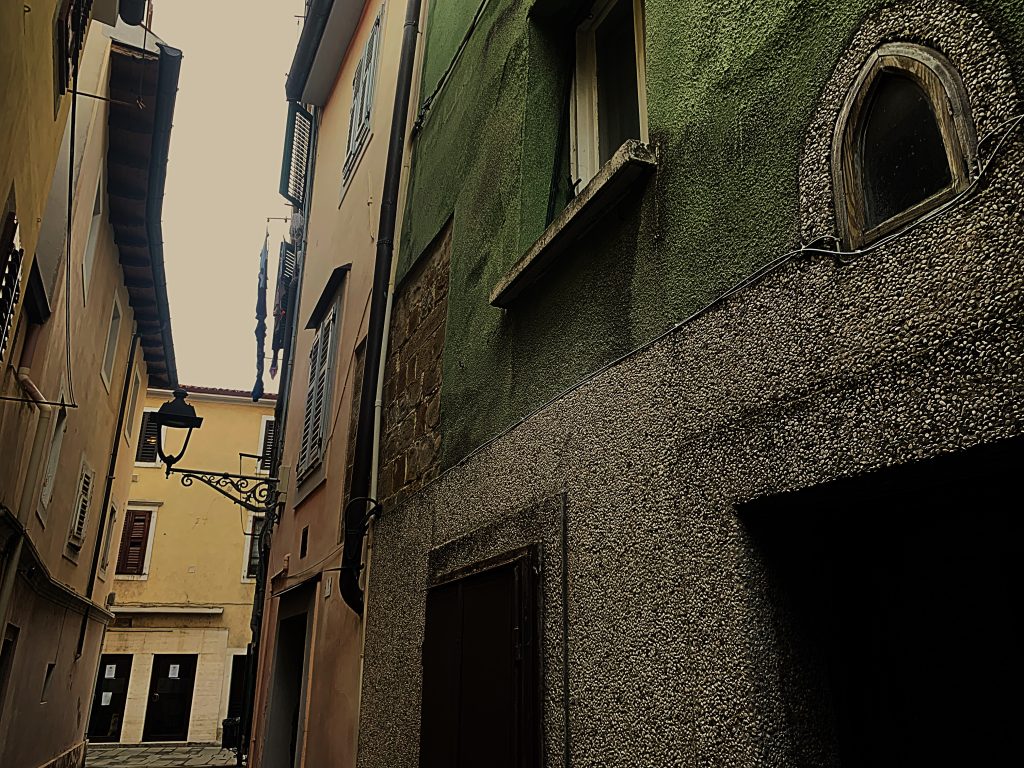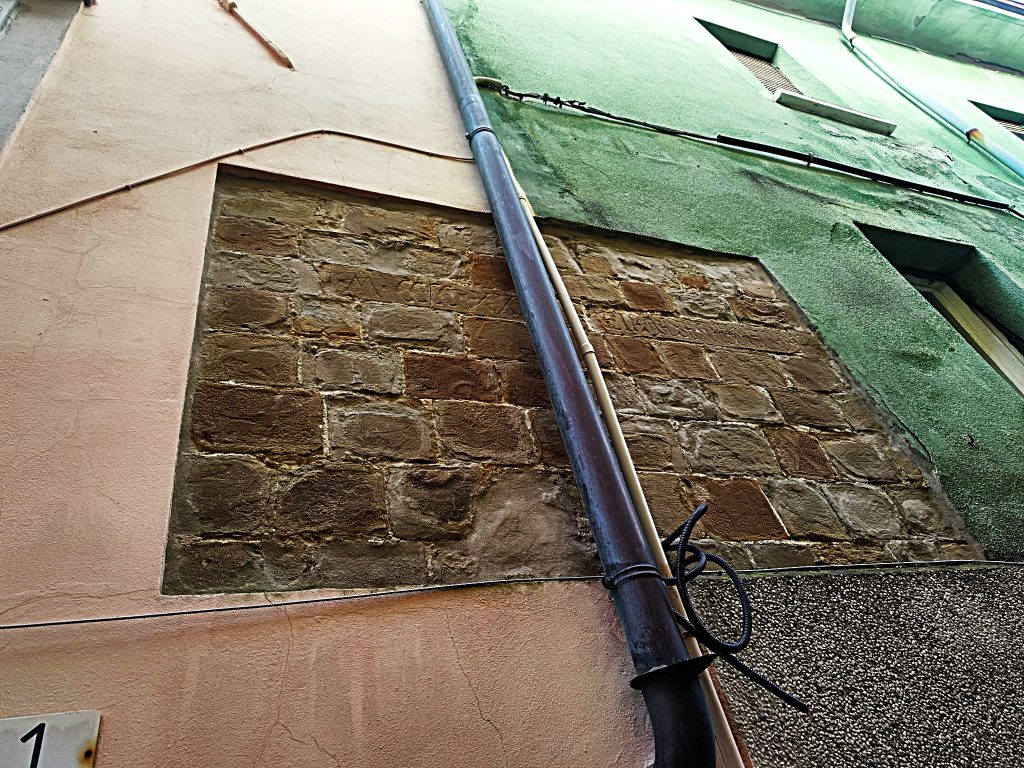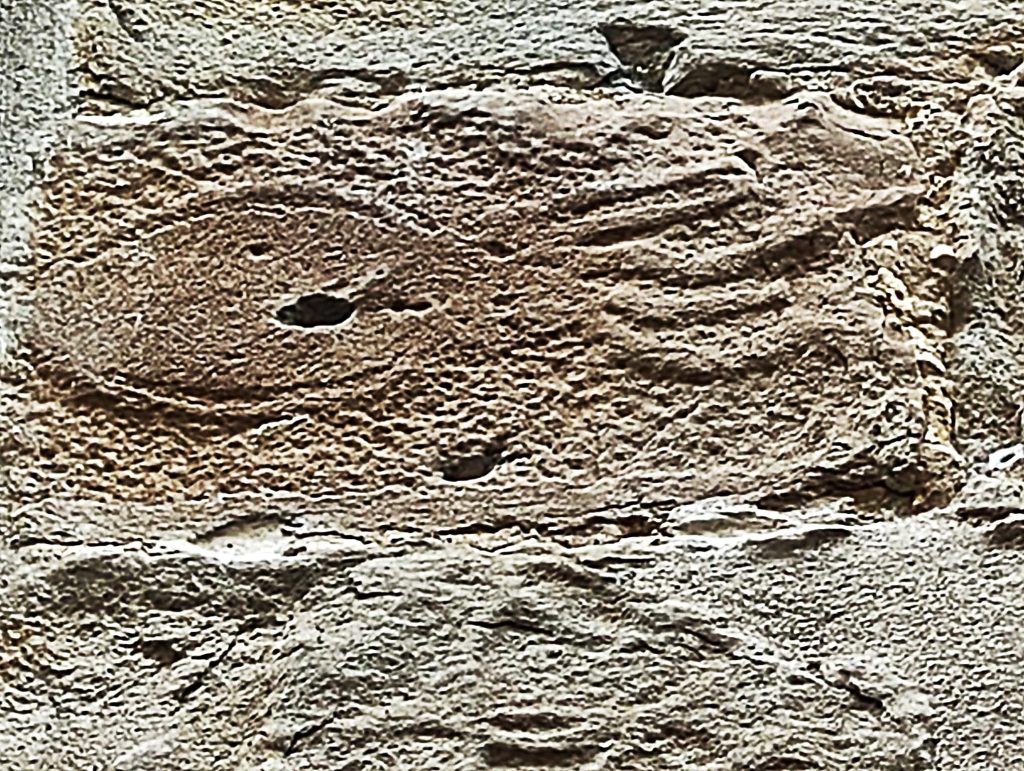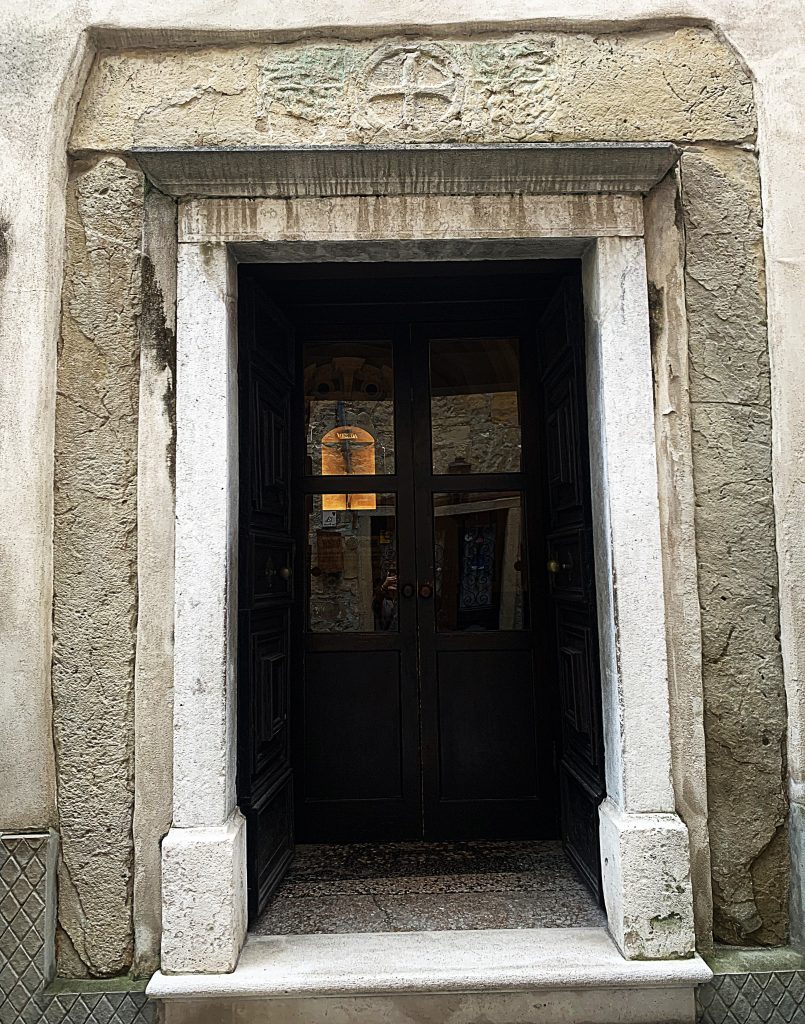by Alessndra Ressa
One of Muggia’s most intriguing historical episodes dates back to the 12th century when the blind and formidable Doge of the Republic of Venice, Enrico Dandolo, led the infamous Fourth Crusade. Despite being nearly 100 years old, Dandolo commanded the Venetian fleet, which made a brief stop in the Gulf of Trieste, demanding a symbolic gesture of submission from Muggia. Yet, rather than finding “pagan” lands, the Crusaders altered their course. Instead of heading to the Holy Land, they sacked Christian Constantinople in 1204.

While this might seem like a simple historical episode, it set the stage for the lingering mystique surrounding Muggia. The town’s medieval center is adorned with cryptic symbols often linked to alchemy and the legendary Templar order. These enigmatic elements remain an unsolved puzzle.

The most enigmatic among them is what historians call The Alchemist’s Enigma, with its intriguing symbols found in an alley of the old town, Calle del Ghetto. On the wall of a house, partially obscured by pipes and drying laundry, a plastered square reveals a “chessboard” of inscriptions. Dating back to 1429, this square consists of 63 carved stones arranged in eight rows, each featuring a different symbol. Despite the wear of time, these images remain visible. You can easily spot a greyhound, a deer, an octopus, a centaur, human figures in various poses, a rider on horseback, a dragon confronting a serpent, a cross, a tower encircled by walls, a shield resembling the modern Croatian flag, the lion of St. Mark, and a cup flanked by animals and floral motifs.

This unusual composition has yet to be fully interpreted. Is it an alchemical table or tied to heraldry? Italico Stener, a renowned scholar of Muggia’s history, notes that the town’s Jewish presence is poorly documented. Jewish surnames are scarcely found in historical records, raising questions about why Calle del Ghetto carries such a name when there’s little evidence of a Jewish ghetto. It’s possible the street name originated from the residence of one or more Jewish families, though their presence was largely forgotten. The Jewish community was eventually expelled, as evidenced by an inscription still visible on the façade of the Town Hall.

Numerous theories have been proposed to explain these symbols. Some suggest that Jews lived in the building in the 15th century, which might indicate the symbols have Jewish significance. Others speculate they represent local noble families. However, since there are no records of Jewish presence in Muggia in 1429, and considering that Jews did not typically adorn their homes with public symbols, it seems unlikely that these carvings are related to Jewish iconography.
The heraldic elements depicted—such as the Samnite shield, the lily, and the marching lion—do not align with the heraldic traditions of the time and do not appear to belong to any known Muggian family. Consequently, it seems improbable that these engravings are tied to local families.
Another theory suggests the engravings may have alchemical meanings, though the lack of typical alchemical symbols, such as the eagle, ram, or caduceus, makes this interpretation less likely. Moreover, alchemists would not typically display esoteric symbols in public view.
One plausible interpretation is that the engravings tell a personal story or represent a specific event, forming what might be called a “silent tale”—a cryptic narrative meant to be visible to all but understood by only a few. Similar representations can be found in nearby Istrian houses from the same period, though never in such abundance as in Muggia. In the nearby Karst hills, at the Canonica of Santa Croce near Trieste, one can find carvings of a phoenix, a donkey, and a snarling dog—symbols reminiscent of those in Muggia.

The table of inscriptions was uncovered during restoration work in 1939. When the old plaster was removed, the engravings became visible, but time and neglect have since caused deterioration. Additionally, a recent gutter installation has further damaged the artwork. Residents of the building have complained about the lack of interest from the local administration in preserving the site. “They want us to remove the gutter and repaint the walls at our own expense,” said a man who has lived in that same house for almost 50 years, “but they refuse to cover the squares with protective glass to prevent acid rain from further damaging it.”
Calle del Ghetto isn’t the only spot in Muggia where mysterious writings appear. In the upper part of the town, near the ancient basilica of Santa Maria Assunta in Muggia Vecchia, another inscription can be found. The basilica is the sole surviving remnant of the original Castrum Muglae, which dates back over 800 years. It houses an impressive series of frescoes, including a large depiction of St. Christopher, shown carrying the Child Jesus across a river. At his feet are two panels: one features a lion, and the other contains an inscription whose meaning is still debated.

One interpretation of the Latin inscription, offered online, roughly translates to: “Anyone who gazes upon the image of St. Christopher will be immune from illness for that day.” This would certainly be a welcome blessing, especially after a hot hike to the church. However, some suggest there may be deeper meanings behind the inscription. According to some, the church’s internal balustrades, possibly built with parts of earlier buildings, feature floral decorations that may be remnants of a pre-Christian pagan cult later absorbed by Christianity. With Muggia’s rich history, these theories continue to spark curiosity.

Muggia’s historical connection to the Crusades goes beyond the Fourth Crusade mentioned at the beginning of this article. The town is located along a potential pilgrimage route to the Holy Land and is thought to have once hosted a Templar order. The enigmatic Templar Knights have long captivated imaginations, and Muggia is no exception. A street in the town bears their name, and the modern Order of Catholic Templar Knights of Italy occasionally visits Muggia for ceremonial purposes.
This connection is also visible in the town’s architecture, where several Templar-like symbols can be found. Above the entrance to the Church of the Crucifix, just a short distance from Calle del Ghetto, a stone lintel bears a classic Templar cross. Though the church was constructed after the Templar order was dissolved, it’s possible that the lintel was repurposed from an earlier structure.
Other Templar-like crosses are also seen on the façade of a Venetian palace on Via Oberdan, and similar symbols appear in the Churches of San Francesco and San Sebastiano. However, as Italian writer Umberto Eco notes in his famous novel Foucault’s Pendulum: “Whenever someone mentions the Templars, it’s almost always a madman.” Perhaps, despite the allure of these mysteries, it’s best not to get lost in speculation. The true magic of Muggia lies not in concrete answers but in the rich, lingering sense of enigma that has fascinated visitors for centuries.




























